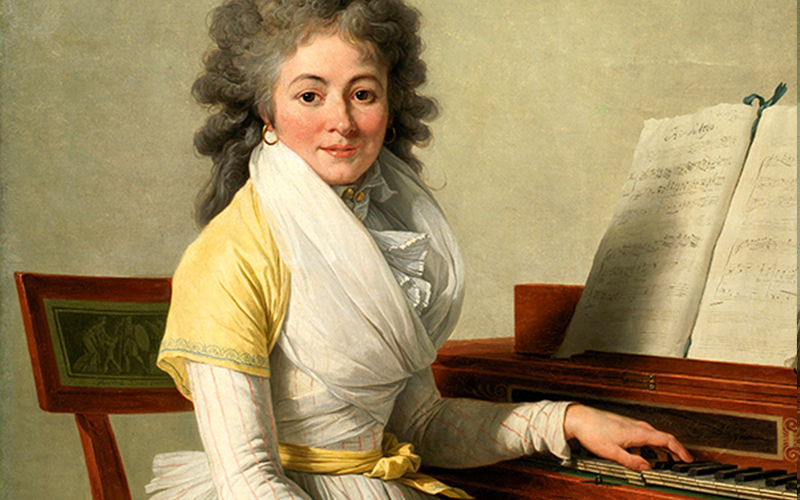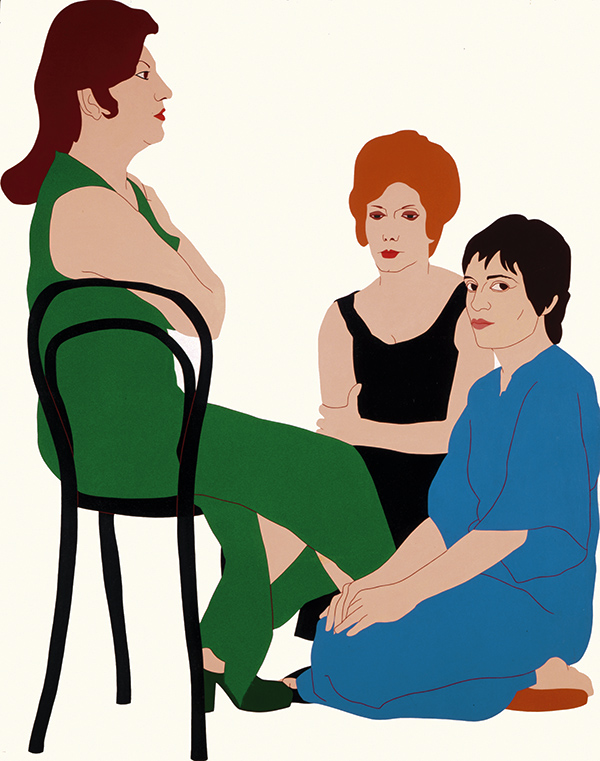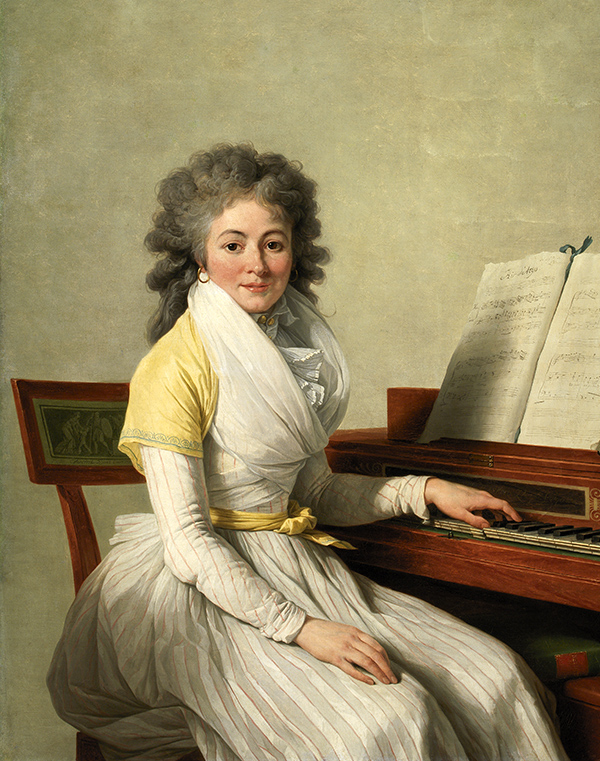Pictures for a time of self-isolation

I like this pair of portraits for several reasons, and I think they make an interesting contrast. In some ways they are remarkably similar, despite the nearly two centuries which lie between them. They are simple portraits, without any accessories except the furniture. Each one has a woman sitting on a chair. Their profile, almost silhouette-like, quality, lends an immediate comparison. There is also a similarly neo-classical simplicity in their quite unadorned costumes, rendered in simple flat colours. The backgrounds of the rooms in which they sit are also essentially abstract.
These are portraits of woman artists at rest. Sitting. Doing nothing. A singer in one, and two writers and a pianist together in the other. There is a great sense of quietness within the pictures; tranquillity perhaps, or inertia. It is more interesting to think about this if we remember that the paintings were made in troubled times: just before the revolution in Portugal, and during the height of the Terror in the French Revolution. Where are these women waiting, we might ask, and what for?

In the 1974 picture of Nikias Skapinakis, we see Maria João Pires and Fernanda Botelho almost at the feet of Natalia Correia. The pianist hands of Maria João Pires lie at rest on her knees, very prominent. In the portrait of Rosalie Duplant, the singer turns to us and away from the piano, one hand resting on the keys. On the piano it is possible to discern the score and to understand that this represents the last role of the singer, who had already retired by the time the picture was painted. It is a piece in the past. In the Skapinakis, by contrast, one might argue that the future is still to come, especially for Maria João Pires.
As we know, Skapinakis was, and is, very interested in the French Revolution and its imagery, but I like the reticence of this pairing, and the way in which both pictures refuse at once to disclose their meaning. I feel that they are about waiting, which makes them suitable for the times we are living through now.

Rosalie Duplant was the stage name of Francoise-Claude-Marie-Rosalie Campagne. She was 48 at the time this picture was painted, and had retired about ten years earlier. Duplant was the same age as the two writers in the Skapinakis portrait, while the pianist was only 30. This portrait of Vincent, which Gulbenkian bought in 1921, most probably had its own partner, a male portrait of a M. Baillon, today at the Rijksmuseum. We know this because there used to be a pair of smaller copies of Rosalie Duplant and M. Baillon in Montreal, at the Musée des Beaux Arts, but they were stolen almost fifty years ago. It seems that this group of pictures was previously at the Château de Meslay near Caen.
These two paintings, with their strong outlines and simple life-like poses stay in the mind. They are easy to remember. They can live with you even when you can’t get to see them, and remind us to be patient.
Text by Penelope Curtis
Diretor of the Calouste Gulbenkian Museum